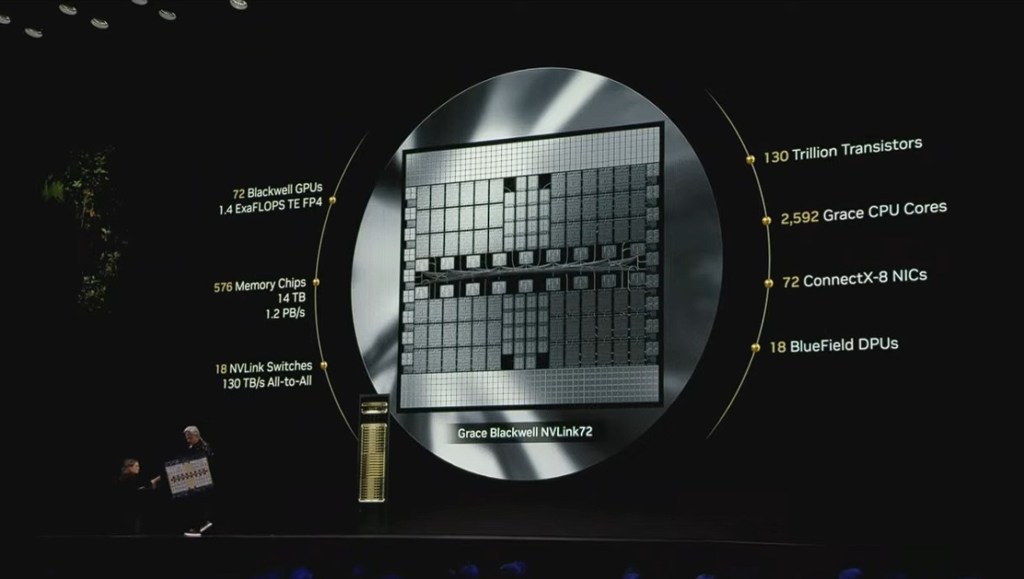Reacting to continuing stock market woes and perhaps tech industry lobbying, U.S. President Donald Trump backed off on tariffs for electronics late last night.
In a document from the U.S. Customs and Border Protection issued on Friday, the U.S. has now exempted these consumer electronics, much of which are manufactured in China and subjected to 145% tariffs as well as a 10 percent global tariff. Semiconductors, which are used in just about everything as chips are the foundation of all electronic devices — will also be exempt.
In doing so, Trump is falling more back into line with established technology economy advice, as tariffs on such devices could halt much of the modern U.S. economy. But it remains to be seen whether this will restore investor confidence in the broader market, as the unpredictability behind Trump’s behavior toward trade allies is as concerning as his actual decisions. The stock market is down 15% since Trump took office.
Some analysts had warned that a $1,000 iPhone might have to sell for $3,500 if it were made in the U.S., but that overlooks the fact that the U.S., with perhaps just 14% of the global market that it pioneered in the 1950s, probably can’t supply enough chips yet for companies like Apple, the most valuable tech company. But the tariffs were going to affect tech products in many different ways.
The Consumer Technology Association estimates that tariffs could make game consoles 40% more expensive for U.S. consumers, with a 26% price increase for smartphones and 46% price increase for laptops. But that was before Trump decided this week to place the biggest tariffs on China.
The process of losing market share in chips has happened over decades with the rise of firms like Taiwan’s TSMC, and the process of regaining market share can’t be fixed just by turning on tariffs, based on an interview I did with Scott Almassy, a partner with consulting and accounting firm PwC, in December.
“Where you really start to get the impact is on the materials, the commodities, the steel and aluminum, the things that really go into the beginning of supply chains that build things that aren’t $500, $600, $700,” Almassey said.
Trump has said that he is still considering sectoral tariffs for some goods — including semiconductors. The move to back off is still a temporary win for companies like Apple, which have pledged to build more electronics in the U.S. But my interview with Deloitte in January suggested that such a process could take decades to accomplish, and it is best done so with subsidies where the U.S. matches what foreign governments do in helping get the factories off the ground for multiple parties.
Duncan Stewart, TMT Center research director at Deloitte, noted earlier that building chip factories with the subsidies from the bipartisan U.S. Chips and Science Act would be big, but even the tens of billions of dollars from that legislation would barely move the needle in bringing back manufacturing to the U.S.
“After all of the plants that are in the process of being built and started and launched, at the end of all of that, by 2032, the U.S. may be up around 14% or something. It takes time. It is an absolutely massive industry. And moving the needle from 10% to 14% is in fact a remarkably good number. It’s a sign of how hard it is to move. And it’s the same for Europe, of course,” Stewart said.
The complexity of supply chains is something else to consider. When Intel dominated the U.S. chip market (as well as the globe), part of the reason was it had the best manufacturing plants in the U.S. That helped reduce its costs, but it fell behind in chip design, giving an opening to firms like Nvidia. Nvidia used TSMC in Taiwan to make its chips, but Nvidia pioneered the use of parallelism in graphics chips to be used in new applications such as AI processing in data centers. If TSMC was not as large or good as it was, then Nvidia would not have been able to overtake Intel and push AI into being the largest chip segment. That means that manufacturing in the home country isn’t the only thing that matters in creating jobs.
Some politicians could be alarmed at the lobbying influence of the tech industry, but it is a fact that the industry creates the kind of high-value jobs that any economy needs to have in the modern age. The industry has to hire highly educated and specialized people, and that requires more education. Yet places like China are turning out far more engineers than the U.S., where math and science education is lagging.
Yet the Trump administration believes pain of this week’s tariffs are aimed at getting that process started and restoring U.S. competitiveness.
“President Trump has made it clear America cannot rely on China to manufacture critical technologies such as semiconductors, chips, smartphones, and laptops,” said a spokesperson for Trump. “That’s why the President has secured trillions of dollars in U.S. investments from the largest tech companies in the world, including Apple, TSMC, and Nvidia. At the direction of the President, these companies are hustling to onshore their manufacturing in the United States as soon as possible.”
It’s clear that tariffs alone aren’t going to solve the trade imbalance with China.
Source link

